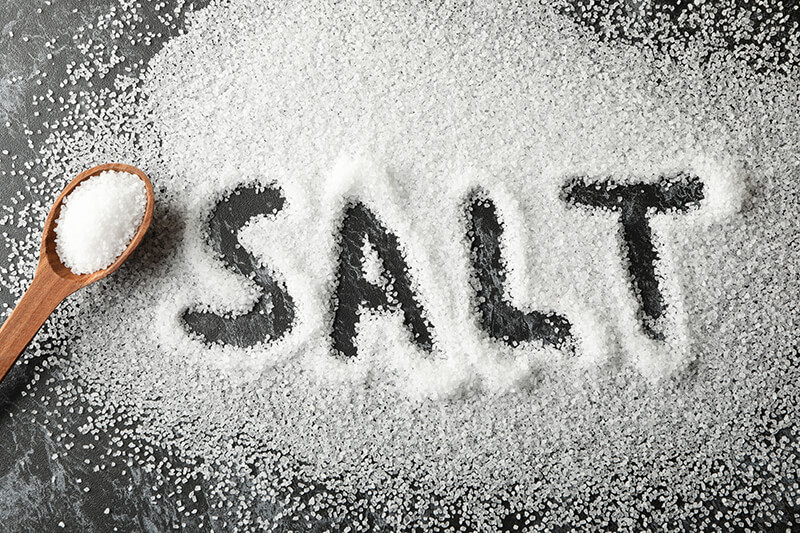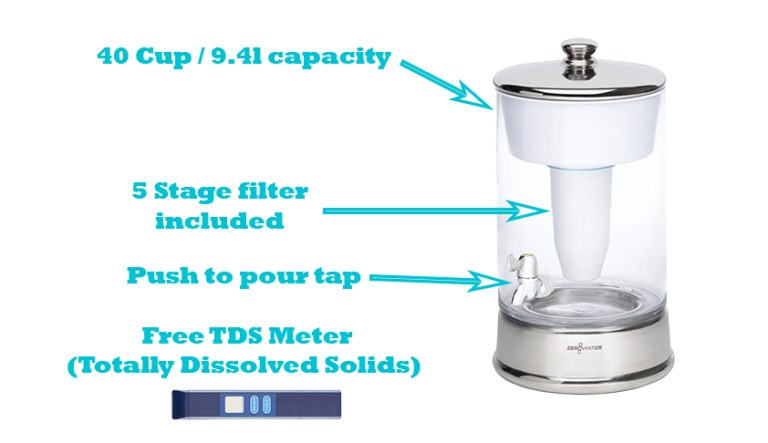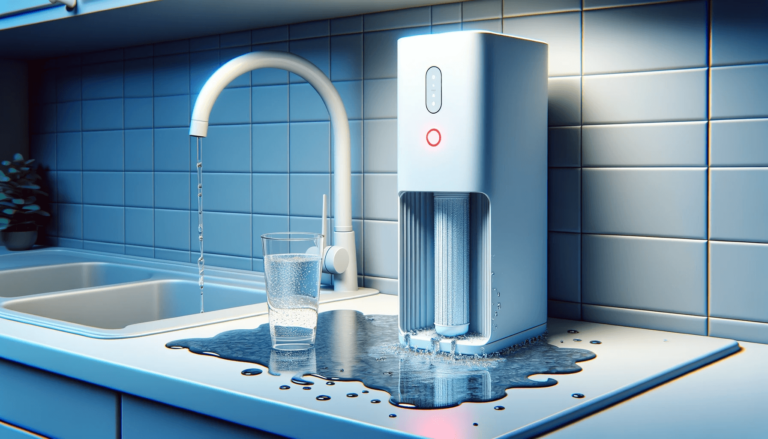If you have installed a salt-based water softener to treat hard water, you must keep your eyes on its salt level. However, What Happens if Water Softener Runs Out of Salt? Well, this question will be answered in detail below.
Table of Contents
You might have often seen cloudy spotted streaks on your glassware and other kitchen utensils after washing them or taking them out of the dishwasher. These cloudy spots result from hard water.
Hard water contains a high concentration of magnesium and calcium. These build-up in your pipes and drains and over time clogs them up. Moreover, it also significantly shortens the lifespan of your appliances such as coffee makers and dishwashers.
It needs to be removed or softened with the help of a water softener before being allowed to run through the house.
How does a Salt-Based Water Softener Work?
A salt based water softener is a water treatment system that softens the water by reducing the concentration of magnesium and calcium in the water. It runs the water through a process called ion exchange.
In the ion exchange method, dissolved ions are taken out of the solution of the water and replaced with other ions. Magnesium and Calcium ions are exchanged with Sodium and Chloride ions. These later form Sodium Chloride, which is also known as salt.
Salt is not dangerous for the pipes nor your kitchen or home accessories. This is why every water softener used in any industrial facility is also an ion exchanger.
What Happens if Water Softener Runs Out of Salt?
The salt used in a water softener is used to produce a brine solution. The first thing that will happen if it runs out of salt is that the resin beads will lose their ability to absorb minerals from hard water. This will render the entire system useless and unable to perform efficiently.
Moreover, running out of salt will lead to other consequences as well. These include the following;
- Your brine tank might come at the risk of overflowing. If it has only one shut-off valve, it will be unable to stop the water once the water softener runs out of salt.
- Usually, the water that passes through the control valve gets softened prior, but hard water will fill it up in the absence of salt.
- The water coming out of the softener with a lack of salt will leave stains on your kitchenware, glassware, shower doors, and faucets and dishwashers.
- The water cannot be softened without salt. So, in their absence, hard water will pass through and clog up the pipes making the drainage and heating system inefficient.
In other words, letting your water softener run out of salts can lead to permanent and irreparable damage to your system components and fixtures.
How Often do You Need to Replace the Salt?
Today, several models of water softeners have transparent covers that show the quantity of salt left in the brine tank. With these, you do not need to manually check the salt quantity and fill it up again when the salt reaches a certain level.
On the other hand, if you do not have such water softeners that have transparent screens, you will need to check the amount of salt every 6 to 8 weeks and fill it up as required.
What amount of Salt will a Water Softener use?
The amount of salt that a water softener uses depends on a certain number of factors. Most importantly, it depends on the number of people in the household and the amount of water that is typically used up.
To keep your water softener running smoothly, you will need to check your salt levels regularly and replace them as soon as the need arises. Moreover, check up on your salt chambers condition as well. Keep a lookout for any kind of rust or bacteria build-up to stay hygienic.
Can Water Softeners run without Salt?
As discussed earlier, if a water softener that uses salt is run without it, the user will have to go through a lot of financial spending. However, these situations can be avoided by looking for alternatives.
You can get your hands on salt-free water softeners. These do not work like salt-based water softeners. Rather than removing the minerals from the water, these water softeners change the chemical composition of magnesium and calcium so that they do not leave any spots or clog up the pipes.
Which is the Best Type of Salt to use in a Water Softener?
A salt-based water softener needs to maintain at all times if you want to keep your stuff free of the damage caused by hard water. You need to keep an eye on the amount of salt in the softener and refill it whenever necessary.
The two most common types of salt that you can choose from to fill your tank are Sodium Chloride and Potassium Chloride. Ideally, the best type of salt that you can use for water softening purposes are the ones that have been specifically designed for this process. Avoid using salts that are used for deicing, cooking, or other purposes.
Where are Salt Based Water Softeners Used?
Salt-based water softeners are not only used at household levels, they have a far larger application scope. These water softeners are used for Dishwasher salt, industrial wastewater treatment, and household water treatment.
In households, they are used to prevent stains on faucets, mineral build-up in pipes, and showerheads and bathtubs.
In dishwashers, they are used to prevent stains on glassware and increase the efficiency of the washing process itself.
On an industrial scale, these softeners are used to reprocess used water and make it available for being used again. The main reason for doing this is to lower water consumption as an environment-friendly initiative.
Conclusion
Now that you have gone through this article, I am certain that you will be much clearer as to how salt-based water softeners work, what happens if the water softener runs out of salt and when the salt should be changed.
I am hopeful that I was able to answer your queries through this article, thank you for giving it a read, and Good Luck!

I like you use water every day in everything I do. I love to find better ways to filter water I drink, soften hard water and find amazing water bottles for when I’m on the go.
I want to share what I find with you and review the options you might be looking for.
Author Profile – Tony Cosentino








One useful resource for monitoring the salt level in your water softener is a salt level indicator. These indicators are typically installed on the outside of the water softener tank and provide a visual representation of the salt level inside. They can help you determine when it’s time to add more salt to ensure your water softener is operating effectively. Additionally, some water softeners come with built-in salt level monitors that can alert you when the salt level is low. Regularly checking and maintaining the salt level in
One unique solution to keep track of the salt level in a salt-based water softener is to use a smart home automation system. By integrating your water softener with a smart home hub or using a dedicated water softener monitoring device, you can receive real-time notifications and updates on the salt level.
This solution not only eliminates the need for manual checks but also ensures that you never run out of salt unexpectedly. With the help of sensors and connectivity, the system can measure the salt level and send alerts